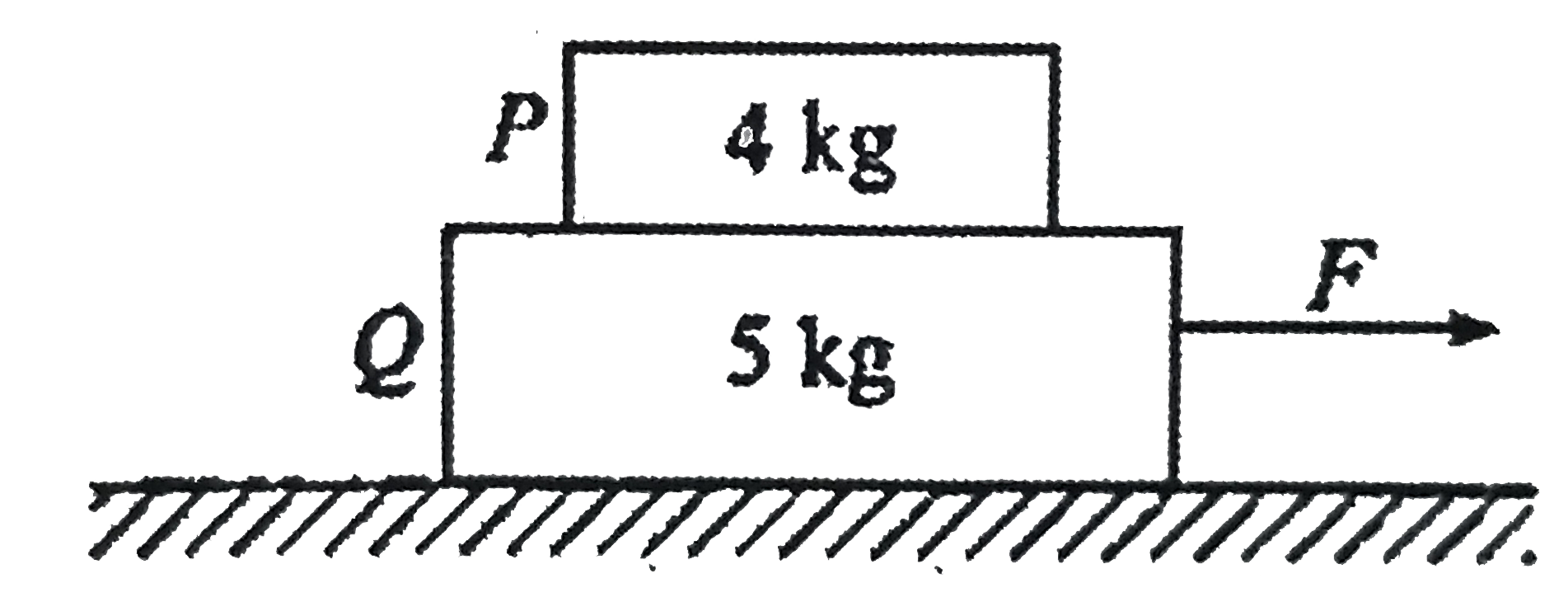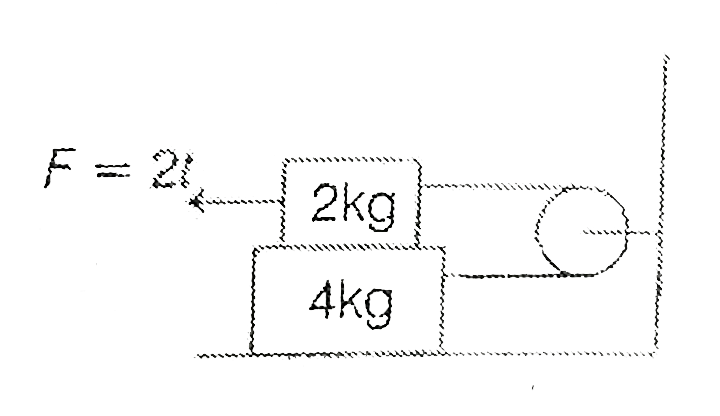Coefficient of friction between 5kg and 10 kg block is 0.5 and that between floor and 10 kg block is 0.8 if friction between floor and 10 kg block is 20 N what is the value of force (in N) being applied on 5 kg

The correct Answer is:20.00
Step by step video, text & image solution for Coefficient of friction between 5kg and 10 kg block is 0.5 and that between floor and 10 kg block is 0.8 if friction between floor and 10 kg block is 20 N what is the value of force (in N) being applied on 5 kg by Maths experts to help you in doubts & scoring excellent marks in Class 12 exams.
Updated on:21/07/2023Topper's Solved these Questions
- TEST PAPERBOOK - ALLENCHAPTER - TEST PAPEREXERCISE - Chemistry
18 Videos
- TEST PAPERBOOK - ALLENCHAPTER - TEST PAPEREXERCISE - MATHS
36 Videos
- SEQUENCE AND PROGRESSIONBOOK - ALLENCHAPTER - SEQUENCE AND PROGRESSIONEXERCISE - Exercise (JA)
12 Videos
- TEST PAPERSBOOK - ALLENCHAPTER - TEST PAPERSEXERCISE - CHEMISTRY
1 Videos
Similar Questions
Coefficient of friction between 5 kg and 10 kg block is 0.5. If friction between them is 20 N. What is the value of force being applied on 5 kg. The floor is frictionless
View SolutionThe coefficient of friction between 4kg and 5 kg blocks is 0.2 and between 5 kg block and ground is 0.1 respectively. Choose the correct statements.

View Solution
Knowledge Check
The coefficient of friction between 4 kg and 5kg blocks is 0.2 and between 5kg block and grond is 0.1 respectively Choose the correct statements.
 AMinimum force needed to cause system to move is 17NBWhen force in 4N static friction at all surfaces in 4N to keep system at rest.CMaximum acceleration of 4kg block is 2m/s2DSlipping between 4 kg and 5kg blocks start when F is >17N
AMinimum force needed to cause system to move is 17NBWhen force in 4N static friction at all surfaces in 4N to keep system at rest.CMaximum acceleration of 4kg block is 2m/s2DSlipping between 4 kg and 5kg blocks start when F is >17NThe coefficient of friction between 4 kg and 5 kg blocks is 0.2 and between 5 kg block and ground is 0.1 respectively. Choose the correct statement : (Take g=10m/s2)
 AMinimum force needed to cause system to move is 17 NBWhen force is 4 N static friction at all surfaces is 4 N to keep system at restCMaximum acceleration of 4 kg block is 2m/s2DSlipping between 4 kg and 5 kg blocks start when F is 17 N
AMinimum force needed to cause system to move is 17 NBWhen force is 4 N static friction at all surfaces is 4 N to keep system at restCMaximum acceleration of 4 kg block is 2m/s2DSlipping between 4 kg and 5 kg blocks start when F is 17 NBlock A of mass 2kg is placed over a block B of mass 8kg . The combination is placed on a rough horizontal surface. If g=10ms−2 , coefficient of friction between B and floor =0.5, coefficient of friction between A and B=0.4 and a horizontal force of 10N is applied on 8kg block, then the force of friction between A and B is.
 A100NB50NC40NDNone of these
A100NB50NC40NDNone of these
In the diagram shown coefficient of friction between 2 kg block and 4 kg block is μ=0.1 and between 4 kg and ground is μ=0.2 then answer the following quwstions .(tis time)

Force of friction on 2 kg block at t=12 s will be
View SolutionIn the diagram shown coefficient of friction between 2 kg block and 4 kg block is μ=0.1 and between 4 kg and ground is μ=0.2 then answer the following quwstions .(tis time)

At t=4 s, the friction between 4 kg block and ground will be
View SolutionTwo blocks of masses 2 kg and 4kg are connected through a massless inextensible string. The co-efficient of fricition between 2kg block and ground is 0.4 and the coefficient of friction between 4kg block and ground is 0.6. The forces F1=10N and F2=20N are applied on the blocks as shown in the figure. Calculate the frictional force between 4 kg block and ground (Assume initially the tension in the string was just before forces F1 and F2 wer applied).

View Solution
When F = 2n, the frictional force between 10 kg block 5 kg block is
View SolutionA system of two blocks is shown in figure. Friction coefficient between 5 kg and 10 kg block is μ=0.6 and between 10 kg and ground is μ=0.4 What will be the maximum value of force F applied at the lower block so that 5 kg block does not slip w.r.t. 10 kg . (g=10m/sec2). The force applied at the upper block is having fixed magnitude of 80 N (both forces start to act simultaneously)

View Solution
